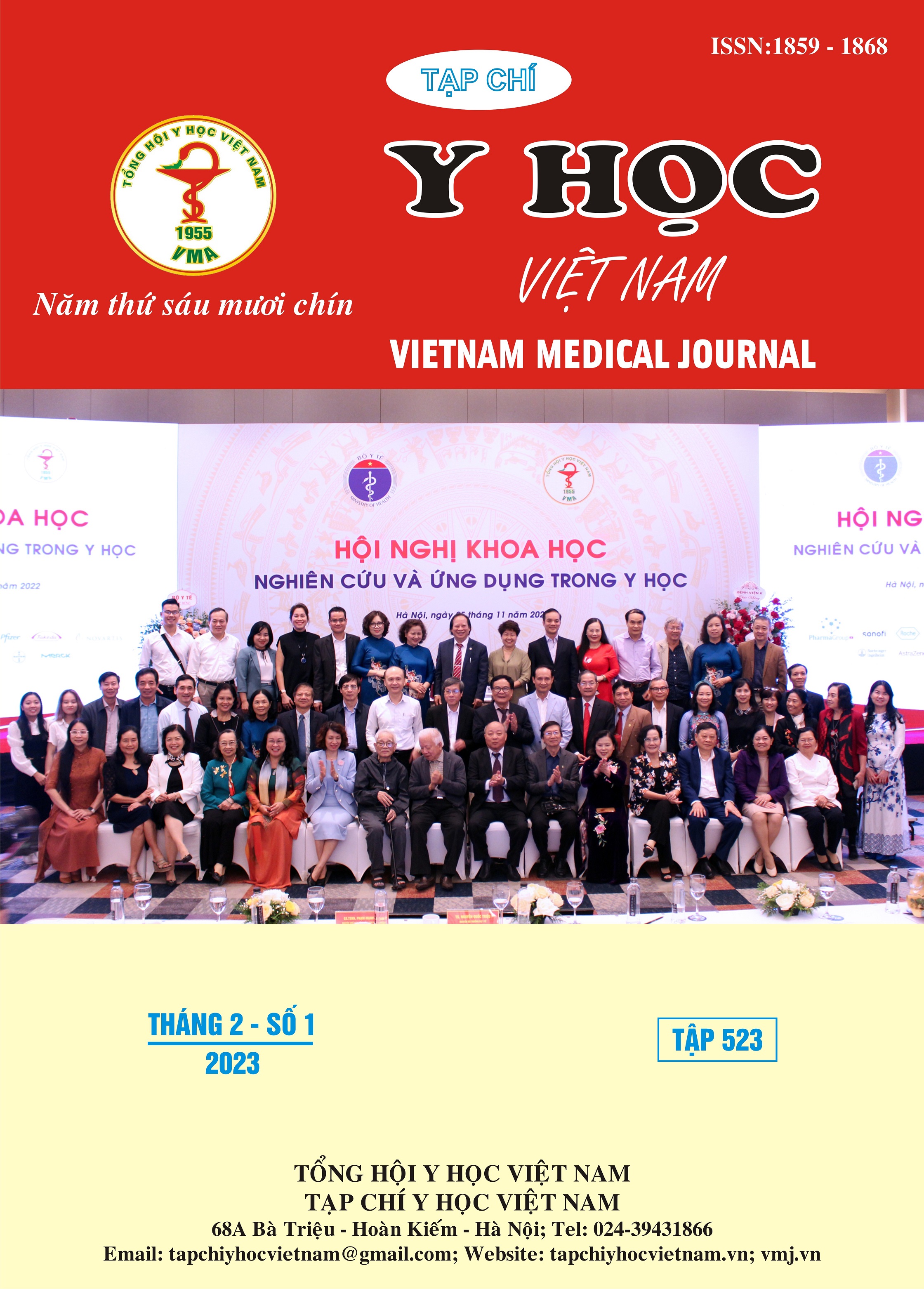RELATIONSHIPS BETWEEN HIGH-RESOLUTION COMPUTED TOMOGRAPHY AND LUNG FUNCTION IN PATIENTSWITH BRONCHIECTASIS
Main Article Content
Abstract
Objectives: To determine the relationship between high-resolution computed tomography (HRCT) and lung function in patients with bronchiectasis. Methods: A cross-sectional description of 60 cases underwent thoracic high-resolution CT and lung function tests at the Respiratory Center, Bach Mai Hospital from September 2021 to September 2022. Results: The mean age 61,40 ± 14,47 with 51,7% were female. Bright circle was the most common image 96,7%, bronchial wall thickening 95%, honeycomb shape 28,3%, and gloved finger sign 16,7%. Cylindrical bronchiectasis 60%, cystic (saccular) bronchiectasis 15%, mixed 21,7%, and the least common type of bronchiectasis was varicose 3,3%. 20% patients showed normal lung function; patients with mixed obstructive-restrictive type and restrictive type were 46,7% and 25%; 8,3% patients had obstructive type. There was a relationship between bronchial wall thickening and mean values of %VC, %FEV1 with statistical significance p < 0.05. The mean values of %VC, %FVC, %FEV1 in the group of patients with cylindrical were higher than those of cystic and mixed (p<0.05). As the number of lung lobes increases, the average values of %VC, %FVC, %FEV1, FEV1/FVC indicators decrease. Conclusion: There is a relationship between lung function decline and bronchial wall thickening, the number of bronchiectasis lobes, and the type of bronchiectasis.
Article Details
Keywords
bronchiectasis, high-resolution computed tomography, lung function
References
2. Martinez-García MA, Oscullo G, Posadas T, et al. Pseudomonas aeruginosa and lung function decline in patients with bronchiectasis. Clin Microbiol Infect. 2021;27(3):428-434. doi:10.1016/j.cmi.2020.04.007
3. Hoàng Minh Lợi, Bùi Xuân Tám, Hoàng Đức Kiệt. Nghiên cứu đặc điểm lâm sàng, hình ảnh Xquang phổi chuẩn và cắt lớp vi tính độ phân giải cao trong bệnh giãn phế quản. Luận án Tiến sỹ Y học. Học viện Quân Y; 2001.
4. King PT. The pathophysiology of bronchiectasis. Int J Chron Obstruct Pulmon Dis. 2009;4:411-419.
5. Roberts H, Wells A, Milne D, et al. Airflow obstruction in bronchiectasis: correlation between computed tomography features and pulmonary function tests. Thorax. 2000;55(3):198-204. doi:10.1136/thorax.55.3.198
6. Lee JH, Kim YK, Kwag HJ, Chang JH. Relationships between high-resolution computed tomography, lung function and bacteriology in stable bronchiectasis. J Korean Med Sci. 2004;19(1):62-68. doi:10.3346/jkms.2004.19.1.62
7. Çi̇Ftci̇ F, Şen E, Saryal SB, et al. The factors affecting survival in patients with bronchiectasis. Turk J Med Sci. 2016;46:1838-1845. doi:10.3906/sag-1511-137
8. Martínez-García MA, Perpiñá-Tordera M, Soler-Cataluña JJ, Román-Sánchez P, Lloris-Bayo A, González-Molina A. Dissociation of lung function, dyspnea ratings and pulmonary extension in bronchiectasis. Respir Med. 2007; 101(11):2248-2253. doi:10.1016/ j.rmed.2007.06.028
9. Công Thị Kim Khánh. Thăm dò chức năng hô hấp, tưới máu hệ mao mạch phổi và biến đổi chức năng thông khí phổi trong phẫu thuật phổi ở bệnh nhân áp xe phổi và giãn phế quản. Luận án Tiến sỹ Y học. Đại học Y khoa Hà Nội; 1995.
10. Lynch DA, Newell J, Hale V, et al. Correlation of CT findings with clinical evaluations in 261 patients with symptomatic bronchiectasis. Am J Roentgenol. 1999;173(1):53-58. doi:10.2214/ ajr.173.1.10397099


